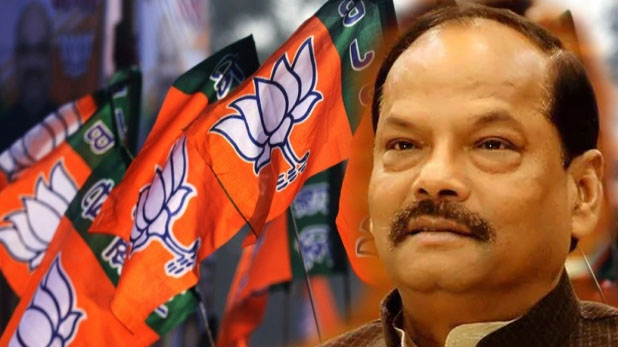The BJP, the party which ran the first majority government in Jharkhand for a full five-term, has been defeated in the 2019 assembly election. The first Chief Minister of the state to complete five-year term- Raghubar Das- lost his seat- Jamshedpur East- to rebel BJP leader Saryu Roy, who fought independently.
The overall tally of BJP was reduced to 25 seats from 37 in the last election, while the JMM-Congress-RJD opposition, led by Hemant Soren registered victory on 47 seats. Hemant Soren’s own party improved its tally from 19 seats in the last election to 30 this time, and Congress 16 from 10 in last election. Even the RJD, which is almost a non-existence player in state, won a seat, riding on the wave.
The vote share of BJP improved to 33.37 per cent from 31.3 per cent in the last election, as it fought alone this time while last time All Jharkhand Students Union (AJSU) led by Sudesh Mahto was ally.
There were various reasons behind the loss of BJP; five most important of them as per our analysis are as follows:
Dumping the Allies
The party, led by Das in the state, has not been able to keep allies Lok Janshakti Party (LJP) and the JD(U) and AJSU. AJSU- it’s most important ally- left the coalition, and polled 8.10 per cent votes. It has been able to make inroads into BJP’s seats in many constituencies and became responsible for the loss of the party.
Infighting
The infighting within the party led to Saryu Roy’s independent candidacy against Das. He was one of the most respected BJP leaders in the state and had played a crucial role conviction of Lalu Yadav and Madhu Koda- senior Congress leader and 4th chief minister of Jharkhand- in corruption cases. Roy, popularly known as a giant killer, has not only defeated Raghubar Das but also tarnished the image of Raghubar Das, as corrupt leader.
Tribal Resentment
Jharkhand, the state with 27.8 per cent tribal population, had a tribal chief minister since its creation in 2000. For the first time, Raghubar Das- an OBC leader- was appointed as chief minister of the state. This has led to resentment against BJP among the tribal population.
The Das government’s unsuccessful attempt to abolish the tenancy act-which banned the sale of tribal land to non-tribal- was termed as anti-tribal act by the opposition leaders. Fake news was spread by the opposition leaders that the government is trying to grab the land of tribal, and this led the popular uprising among the tribal population against the BJP.
JMM leaders like Hemant Soren had resorted to same old tribal plank. In various rallies, the JMM leader said that the BJP government at centre and Ragubar Das government in the state has created the tribal population.
All the parties resorted to ‘quota politics’ to appease the voters. JMM has promised 28 per cent reservation to Scheduled Tribes, 27 per cent to Other Backward Classes and 12 per cent to Scheduled Castes, as per the party manifesto.
State vs national issue
BJP had won 8, 12, 12 seats in 2009, 2014, and 2019 general elections respectively. In the 2019 general election, which happened in May, BJP won 12 seats out of 14, but it lost in the same pockets in the assembly election. This has once again made it very clear that the voters are able to differentiate between national and state election.
BJP tried to bank on the national issues and leaders, but, the same voters who voted for BJP in the general election joined the alliance bandwagon in the state election.
Opposition’s smartness
While the BJP dumped its allies, Soren brought the RJD and Congress together. The party also campaigned very smartly; it refrained from attacks on PM Modi and kept the election on local issues. It attacked Raghubar Das and the corruption in his government, tried to emotionally appeal the tribal by painting the Das led government as anti-tribal.
